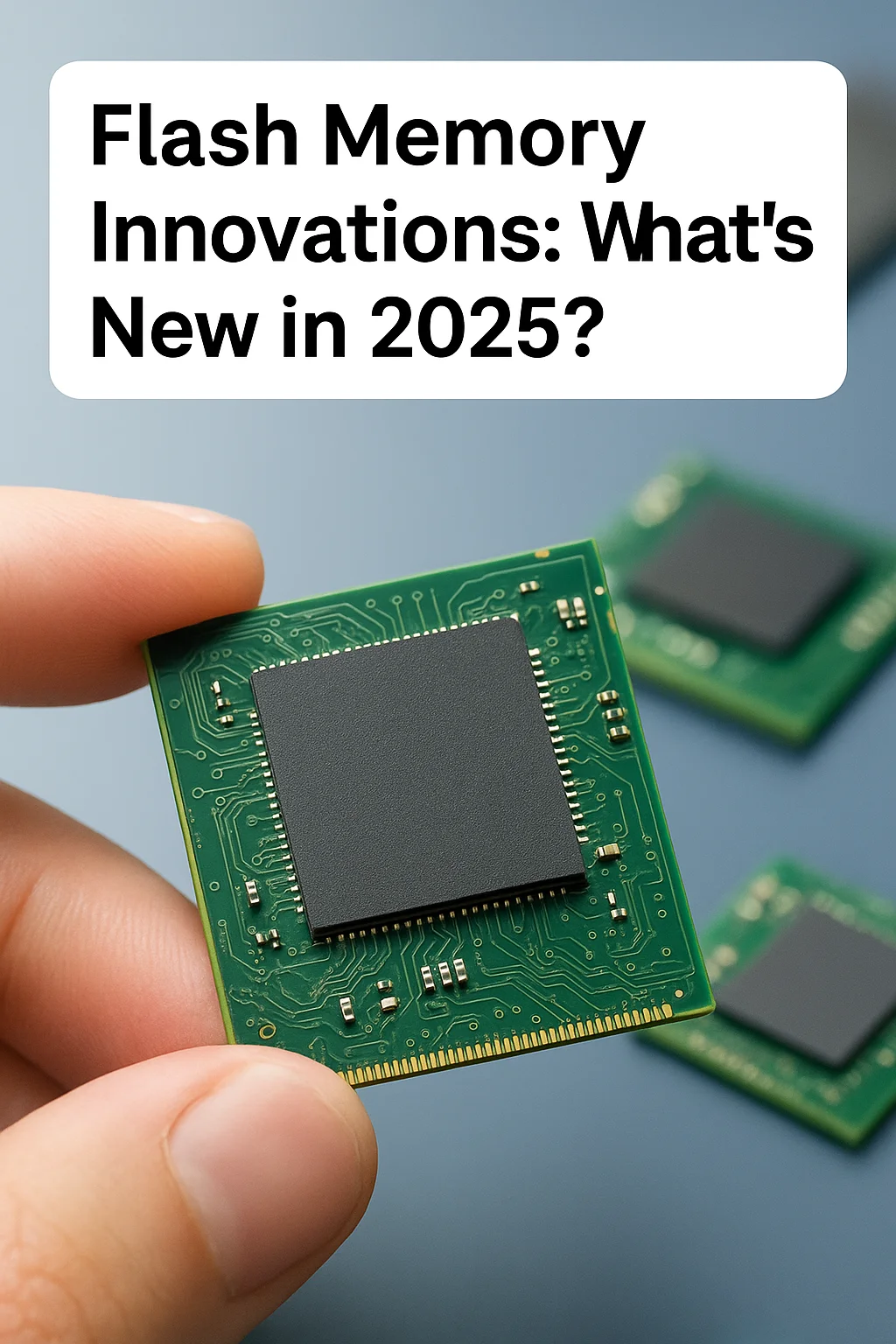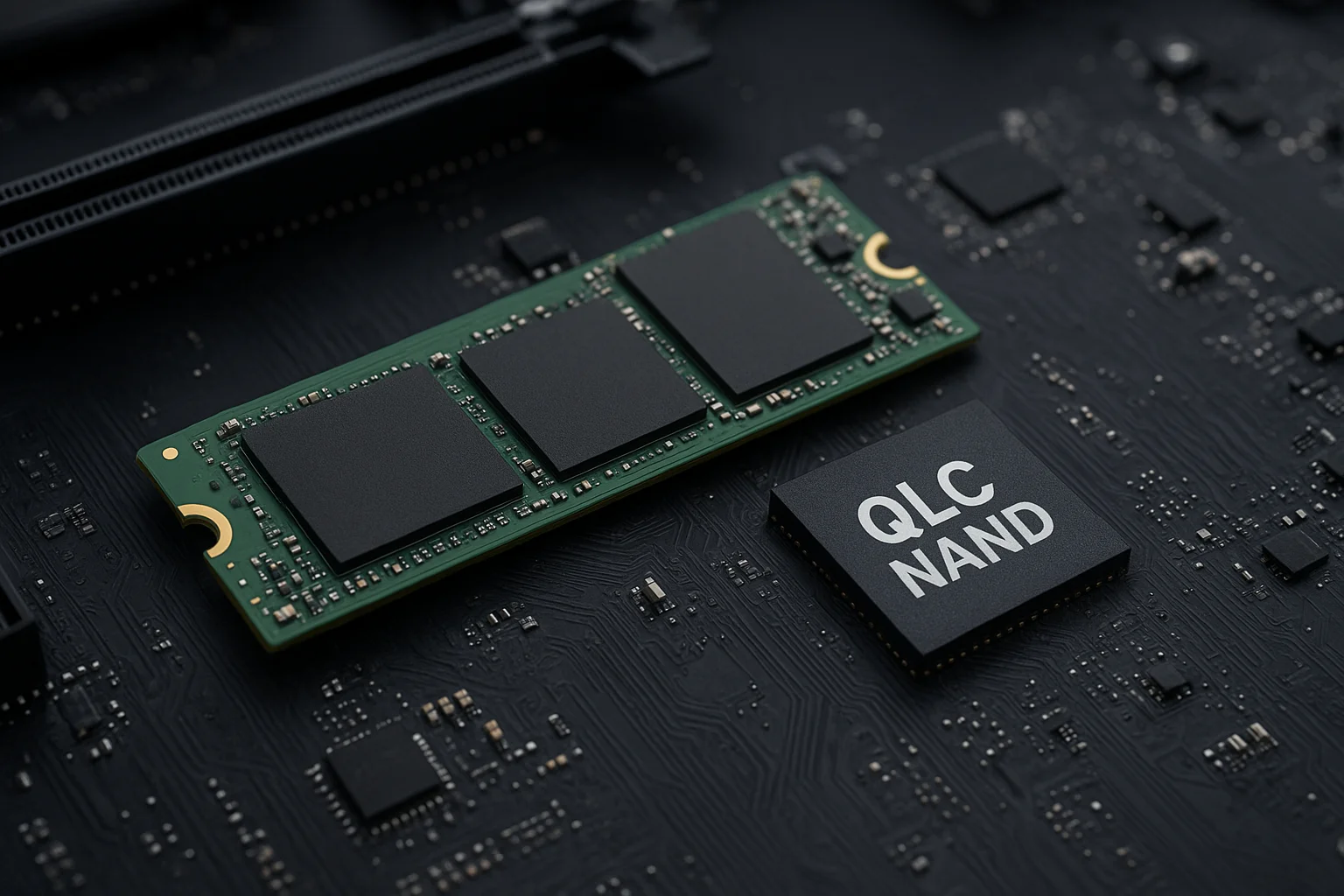3D NAND Reimagined: Higher Layers, Higher Density
Flash memory manufacturers continue to push the limits of 3D NAND vertical stacking in 2025. After surpassing the 200 layer milestone, companies are now working toward over 300 layers, enabling major density improvements. A higher number of layers allows more storage capacity in the same physical footprint, reducing the cost per gigabyte and making high-performance SSDs more accessible.
This evolution is not only about adding layers. It also involves innovations in materials, cell structure, and lithography techniques. The shift toward string stacking, which combines multiple stacks of NAND layers into one unified architecture, plays a key role. The result is enhanced reliability and write endurance despite tighter TLC and QLC cell structures.
Manufacturers are also enhancing the speed of memory cells. Newer 3D NAND generations reduce latency and improve throughput performance by optimizing cell-to-cell communication and enabling faster program and erase cycles. These advancements allow SSDs to better support modern workloads such as real-time analytics, gaming, and 8K video editing.
Below is a simplified comparison table highlighting the differences between the latest 3D NAND and earlier generations:
| Generation | Typical Layer Count | Target Applications |
|---|---|---|
| Early 3D NAND | 64 to 96 | Consumer storage, entry-level devices |
| 2022-2023 NAND | 128 to 176 | Performance SSDs, servers, edge computing |
| 2025 NAND | 200 to 300+ | Data center acceleration, AI processing, industrial systems |
Next-Gen Interfaces: PCIe 6.0 and Beyond
Until recently, PCIe 5.0 provided more bandwidth than most consumer workloads could saturate. However, rapidly increasing data sizes and the expansion of generative AI have accelerated the need for PCIe 6.0 SSDs. With up to double the throughput of PCIe 5.0, these drives dramatically reduce load times and support real-time collaboration with massive datasets.
Future-proof servers and workstations benefit the most from this upgrade. Industries such as motion picture production, cloud computing, and scientific simulation can now operate efficiently on local flash storage instead of relying on remote servers. Reduced latency is particularly beneficial when applications process huge data streams that must remain close to compute resources.
Gamers and content creators will eventually see the effects too. Faster drive speeds mean quicker texture streaming, smoother open-world loading, and faster transfers of life-sized project files. Meanwhile, UFS 5.0 and newer eMMC standards bring similar improvements to smartphones and small IoT devices, enabling premium storage performance in mobile form factors.
To summarize the benefits of new interface standards, here are three core advantages:
- Massive boost in read and write performance suitable for AI and enterprise workloads
- Lower latency improving responsiveness in data-heavy applications
- Energy efficiency per transferred bit, improving sustainability in data centers
AI-Optimized Flash: Smarter Controllers, Longer Lifespan
Flash controllers are becoming intelligent processors capable of making real-time decisions. In 2025, controllers integrate machine learning algorithms to optimize wear leveling, predict failures earlier, and handle complex workloads with reduced strain on NAND cells. These improvements extend SSD lifespan and reduce data loss risks.
Predictive analytics running inside the SSD firmware can detect unusual write patterns or emerging physical damage. Such early detection allows proactive data migration, reducing the probability of sudden drive failures. For businesses handling sensitive information, this capability becomes a crucial asset for continuity and cybersecurity strategies.
Additionally, AI-optimized controllers improve error correction. Each year, as more bits are stored in a single cell, the chances of data interference grow. Smart ECC engines dynamically adjust correction levels based on operational conditions. Instead of treating all cells the same way, drives analyze environmental changes like heat and workload intensity to make smarter decisions.
Here is when adaptive controller technology becomes especially valuable:
- In edge servers exposed to harsh temperature variations
- In AI training environments generating continuous high write loads
- In QLC-based consumer SSDs requiring increased endurance
Users benefit both from stronger reliability and the potential to keep older hardware relevant longer, slowing down the need for replacements and reducing electronic waste.
Zoned Storage and CXL: A New Architecture Frontier
Traditional storage does not always align data efficiently, especially when applications process large datasets with different sizes and lifespans. Zoned storage aims to address this by organizing data into controlled zones where similar types of information are stored together. This reduces write amplification and improves flash endurance.
In parallel, the rise of Compute Express Link (CXL) enables flexible memory sharing between CPUs, GPUs, and accelerators. Instead of isolating memory modules inside a single machine component, CXL creates a shared memory pool accessible across systems. Flash drives connected via CXL behave more like main memory, dramatically reducing bottlenecks.
These combined innovations enable new use cases:
- Composable data centers where resources can be dynamically allocated
- Big data analytics with improved performance at lower cost
- Faster scaling of machine learning infrastructure
Organizations focused on cloud transformation and sustainability benefit the most. Resource pooling avoids overprovisioning, decreases operational waste, and creates a more flexible computing environment that adapts to business growth.
Ultra-Low Power Flash for Edge and IoT
Billions of connected devices operate far from reliable power sources. Flash memory in this domain must consume as little energy as possible while still responding rapidly to external triggers or sensor data. In 2025, innovations in low-power flash technology enable breakthroughs for portable medical devices, smart meters, autonomous sensors, and industrial robots.
These new memory solutions reduce idle power consumption significantly. They are also designed to wake up from sleep states faster. That means only small bursts of energy are required when processing data, helping devices rely on small batteries or renewable micro-sources such as solar panels.
Here are typical features found in modern IoT-focused flash chips:
- Optimized standby modes keeping memory available without continuous power
- Energy-efficient interfaces like UFS variants tailored for embedded systems
- Improved durability suitable for remote or rugged environments
As cities adopt smart infrastructure, and factories connect more machines through Industrial IoT, low-power flash memory becomes essential for both operational continuity and reducing total energy consumption. These advancements contribute to a more sustainable technology ecosystem and accelerate digital transformation around the globe.






